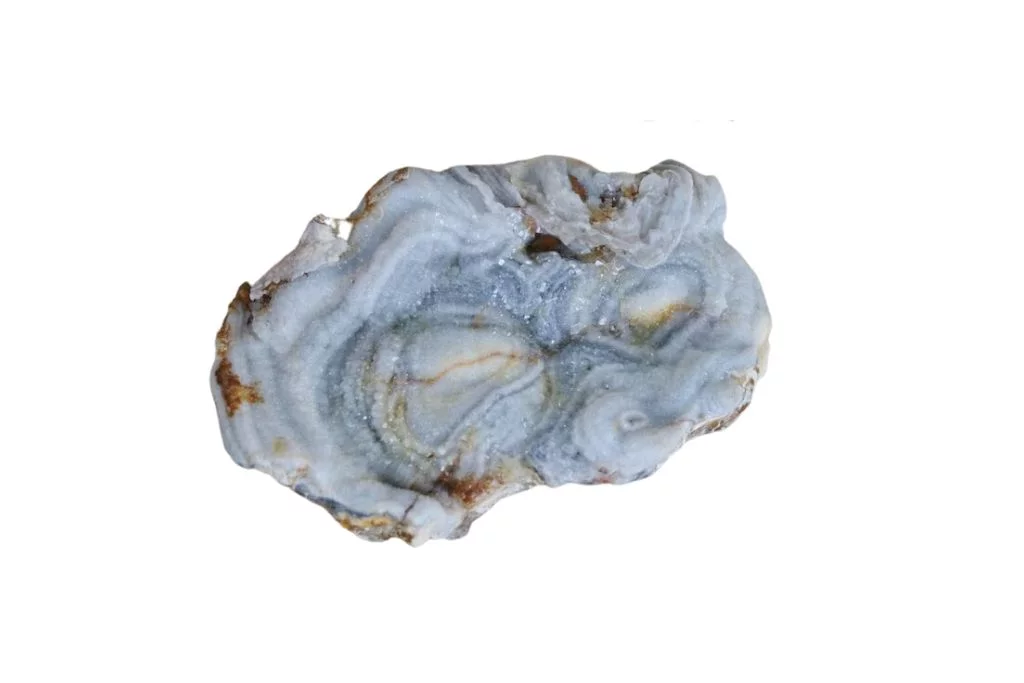Color and Appearance of Amorite
Amorite is a striking crystal known for its distinctive appearance. The most common color of Amorite is a soft, pale green, reminiscent of sea foam or mint. However, it can also occur in shades ranging from light blue-green to deeper forest greens. Some specimens may display subtle variations or zones of color within a single crystal.
Crystal Structure
Amorite typically forms in prismatic crystals, often elongated and slender in shape. These crystals can grow individually or in clusters, creating intricate and visually appealing formations. The crystal structure of Amorite belongs to the orthorhombic system, which gives it its characteristic elongated habit.
Notable Physical Characteristics
One of the most remarkable features of Amorite is its translucent to transparent quality, allowing light to pass through the crystal and enhancing its ethereal appearance. The surface of Amorite crystals often exhibits a vitreous or glassy luster, which contributes to its overall allure.
Unique Aspects
What truly sets Amorite apart is its association with ancient marine environments. This mineral is often found in close proximity to fossil remains, particularly ammonites, from which it derives its name. In some exceptional specimens, Amorite crystals can be observed growing directly on or within the chambers of fossilized ammonite shells, creating a captivating fusion of prehistoric life and mineral formation. This unique characteristic makes Amorite highly prized among collectors and paleontology enthusiasts alike.
Historical and Cultural Significance of Amorite
Amorite, also known as Ammolite, is a rare and iridescent gemstone with a rich historical background. Formed from the fossilized shells of ancient marine mollusks called ammonites, this gemstone has been revered by various cultures for centuries. Native American tribes, particularly those in Alberta, Canada, where Amorite is primarily found, have long considered it a sacred stone with powerful spiritual properties.
Metaphysical Associations
In the realm of crystal healing and metaphysics, Amorite is believed to possess several beneficial properties. It is often associated with transformation, renewal, and spiritual growth. Many practitioners claim that Amorite can enhance one’s connection to the natural world and promote a sense of harmony with the environment. The stone is also thought to stimulate creativity, boost intuition, and facilitate communication with higher realms of consciousness.
Common Uses and Benefits
Amorite is commonly used in jewelry and decorative objects due to its striking appearance and rarity. Beyond its aesthetic appeal, the gemstone is employed in various holistic practices. Crystal healers often recommend Amorite for balancing and aligning the chakras, particularly the solar plexus and third eye chakras. It is believed to help release negative emotions, reduce stress, and promote overall well-being. Some practitioners use Amorite in meditation to enhance focus and deepen their spiritual experiences.
Traditional and Modern Applications
Traditionally, Amorite was used in Native American rituals and ceremonies for its perceived ability to connect the user with ancestral wisdom and the spirit world. In modern times, it has gained popularity among collectors and metaphysical enthusiasts. Amorite is often incorporated into energy healing practices, placed on altars, or worn as jewelry to harness its purported benefits. Some people use it as a talisman for protection during travel or to attract abundance and good fortune in their lives.

